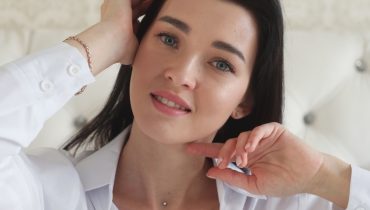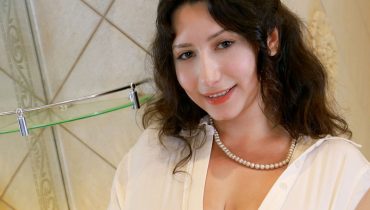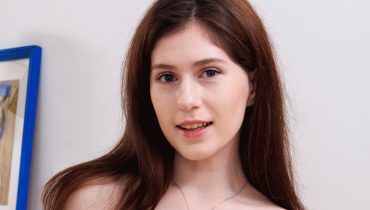For most of her adult life, Amber Davis thought feeling tense, rushed, and emotionally overloaded was simply part of being a high-performing person. As a mid-level corporate strategist juggling tight deadlines, client expectations, and endless meetings, she believed stress was a normal tax she paid for ambition. What she didn’t see—what she couldn’t see until her body began sending unmistakable signals—was how deeply stress had woven itself into her nervous system.
She began waking with clenched teeth and a jaw so tight she struggled to speak clearly for the first few minutes of the day. Her shoulders sat permanently near her ears. Her breathing stayed shallow even during moments of rest. And the most surprising part was how easily small inconveniences unraveled her: a slow elevator, a long line, a simple question from a coworker. Everything felt like a threat. Her body was living in a constant state of alertness that no amount of weekend relaxation could undo.
“I kept telling myself I was fine,” Amber said. “But I wasn’t fine. I was surviving. And surviving isn’t the same thing as living.”
It took a moment of frightening clarity—an afternoon panic episode in the parking lot of her office—for Amber to finally stop and listen to what her body had been saying for years. Stress wasn’t a temporary state anymore. It had become her baseline. And if she wanted to change her life, she would have to understand stress not as an emotion, but as a full-body physiological experience that needed real care and attention.
The hidden architecture of chronic stress
Once Amber began reading about the science of stress, she was stunned by how simple yet profound the concepts were. The body is constantly toggling between two systems: the sympathetic state, which prepares the body for danger, and the parasympathetic state, which governs rest, digestion, and healing. Amber had lived in sympathetic mode for so long that her body forgot how to downshift.
Her heart rate stayed elevated even during rest. Her sleep remained shallow, never offering true recovery. Her digestion slowed. Her mood became brittle. Stress wasn’t just a feeling—it was a physiological loop that kept resetting every time her brain encountered pressure.
One article she found especially eye-opening came from Mayo Clinic, explaining how stress hormones like cortisol and adrenaline can reshape sleep, appetite, immune response, and cognitive focus. It was the first time she understood how stress touches every corner of the human system.
Armed with this perspective, Amber began a slow, careful project of rebuilding her relationship with her own nervous system—not through drastic lifestyle changes, but through natural, sustainable shifts that helped her body relearn the language of calm.
Finding her way back into her body
Amber’s journey began with something deceptively simple: noticing. Noticing when her breath became thin. Noticing when her spine stiffened. Noticing the way her body braced as if preparing for impact whenever her phone buzzed. She had spent so many years ignoring her internal signals that she needed to “reintroduce” herself to her own body.
The first few weeks of this practice were surprisingly emotional. She realized how often she pushed through tension without acknowledging it. Stress wasn’t occasional; it lived inside her posture, her breath, her thoughts, and even her tone of voice. That realization marked the moment when her healing stopped being intellectual and became embodied.
From there, Amber began exploring natural ways of reducing stress—not as hacks or life tricks, but as ways of teaching her nervous system how to soften again.
The slow unclenching: how nature, regulation, and rhythm reshaped her stress response
Amber’s first breakthrough didn’t come from supplements or therapy or meditation. It came during a short walk near her office. She realized she had been sitting indoors under artificial light for nearly six straight hours. The moment sunlight hit her skin, her breath deepened. Her eyes relaxed. Her mental pace slowed. She had stumbled into one of the most ancient stress reducers available: light and movement.
Over time, this became a pattern. Natural stress reduction wasn’t dramatic or ceremonial. It was subtle, rhythmic, and rooted in the simplest physical cues: light, air, movement, breath, sound, warmth, coolness. She often says she didn’t learn to “fight” stress; she learned to cooperate with her biology.
Amber noticed that stress always settled in three places—her breath, her posture, and her thoughts. When she tended to even one of those aspects, the others followed.
Breath: the doorway out of survival mode
Breathing deeply was astonishingly difficult at first. Her body had become so accustomed to shallow chest breathing that deeper breaths felt foreign, even uncomfortable. But when she began practicing slow, elongated exhales in moments of tension—at her desk, in her car, before bed—something remarkable happened. Her body learned to interrupt the pattern that kept pulling her back into vigilance.
She didn’t think of it as “breathing exercises.” She thought of it as reclaiming space inside her ribs. She found that whenever she extended her exhale, a quiet shift happened in her mind. The panic signals softened. Her heart rate decreased. Her shoulders dropped without permission.
Posture: where stress takes physical form
Amber also discovered how heavily her stress lived in her body. When she felt overwhelmed, her spine curled forward, her shoulders hinged inward, and her jaw tightened. This posture reinforced stress, sending signals back to the brain that something was wrong.
Relearning open posture—lifting her sternum, releasing her jaw, placing her feet firmly on the ground—became a form of natural regulation. She learned that the body can influence the mind as much as the mind influences the body, and that changing her physical shape often shifted her emotional landscape.
The emotional layer of stress: learning not to outrun herself
Over the years, Amber had developed a habit of outrunning her feelings. Deadlines, tasks, commitments, and productivity became distractions from emotional tension. But when she began slowing down, she realized that much of her stress wasn’t from her environment—it was from the pressure she placed on herself.
The most difficult part of her journey involved acknowledging that she had tied her self-worth to constant output. Reducing stress required not only natural practices but also emotional honesty. She had to let herself rest without guilt, say no without apology, and trust that her value wasn’t measured by her efficiency.
The unexpected role of sensory regulation
One thing helped Amber more than she expected: tuning into her senses. She discovered her nervous system calmed remarkably when certain sensory inputs were adjusted. Soft lighting in the evening, warm tones instead of sharp white LEDs, natural sounds like rain or distant waves, or the comforting texture of a soft blanket—these were not indulgences but physiological tools.
Her stress levels dropped most on nights when she transitioned slowly from stimulation to softness: dim lights, a warm shower, quiet music, and a moment of sitting still before bed. It taught her that the nervous system responds less to logic and more to experience.
How nature became her most reliable therapist
Perhaps the most transformative discovery for Amber was how deeply she responded to nature. She began stepping outside during sunset, letting the warm, fading light settle her senses. She spent weekend mornings walking barefoot in her backyard grass, feeling the coolness of the earth. She paused to watch the movement of tree branches during windy days and noticed how her breath naturally slowed.
There was nothing mystical about it. Nature simply provided the opposite of her work environment’s constant stimulation. Where her job demanded urgency, nature offered patience. Where her screens offered brightness, nature offered contrast. Where her meetings demanded output, nature offered silence. This contrast let her nervous system recalibrate.
The role of gentle supplementation in calming her stress cycle
Amber was hesitant at first to use any supplements. She didn’t want a “pill for stress.” But with guidance from her physician, she experimented with gentle, natural supports that didn’t override her nervous system but instead helped regulate it. What mattered most to her was that they reduced pressure, not consciousness. They became helpers, not crutches.
The supplements she found most supportive were those that softened her physiological barriers to relaxation—nutrients that nudged her nervous system into a more receptive state. They didn’t numb her. They allowed her to return to herself. For Amber, natural stress reduction was not about escaping; it was about re-entering her body with calmness intact.
The long, slow reshaping of her stress responses
Amber didn’t transform overnight. For the first few months, progress was subtle. She would go several days feeling lighter, then slip back into old tension patterns. But each time she returned to her practices—breath, posture, sensory softness, nature, gentle supplementation—her body responded more quickly.
The gap between tension and release narrowed. The time it took her to calm down after stressful interactions shortened. Her sleep deepened. Her mornings felt less frantic. She still experienced stress—everyone does—but it no longer defined her inner world.
Over time, her baseline shifted. Calm became more familiar than panic. Rest became more familiar than vigilance. Her body remembered how to soften again.
Amber’s quiet conclusion
If Amber has learned anything, it is that natural stress reduction is about building a life where the nervous system is invited—over and over again—to settle. Not by force, not through rigid routines, but through gentle, sustainable choices that make the body feel safe.
She no longer chases productivity to prove her worth. She no longer outruns herself. She no longer treats stress as an enemy to defeat but as a signal to listen to. And every day, through breath, nature, posture, sensory grounding, and gentle support, she teaches her body again and again that it is allowed to rest.




























































